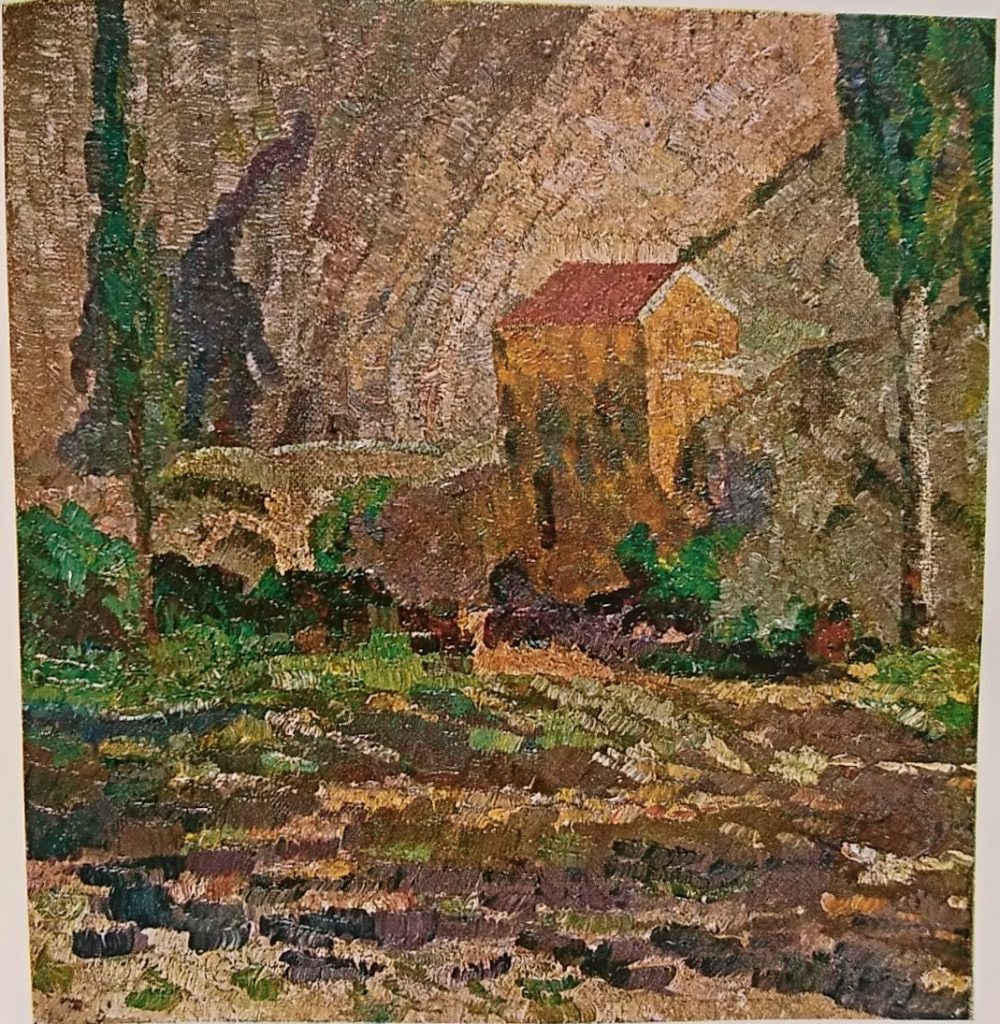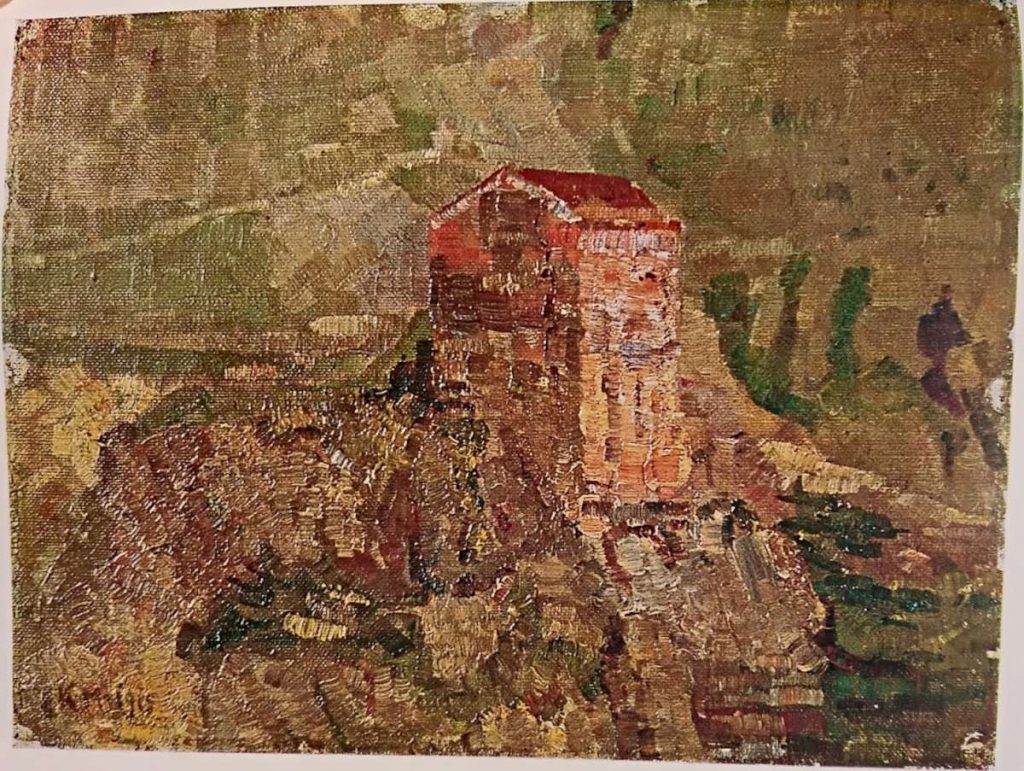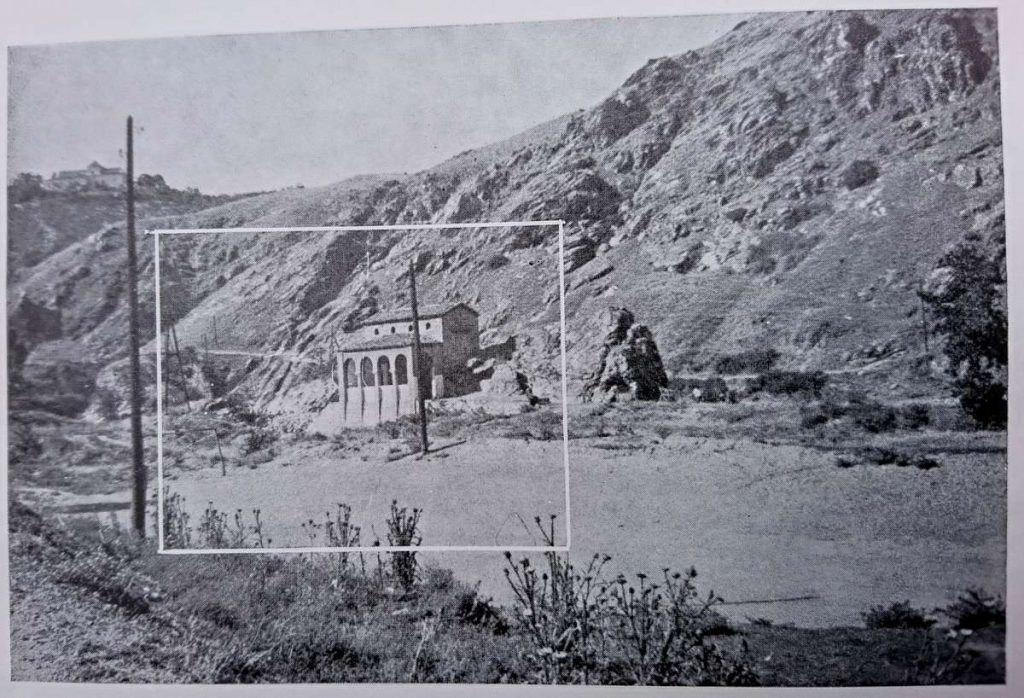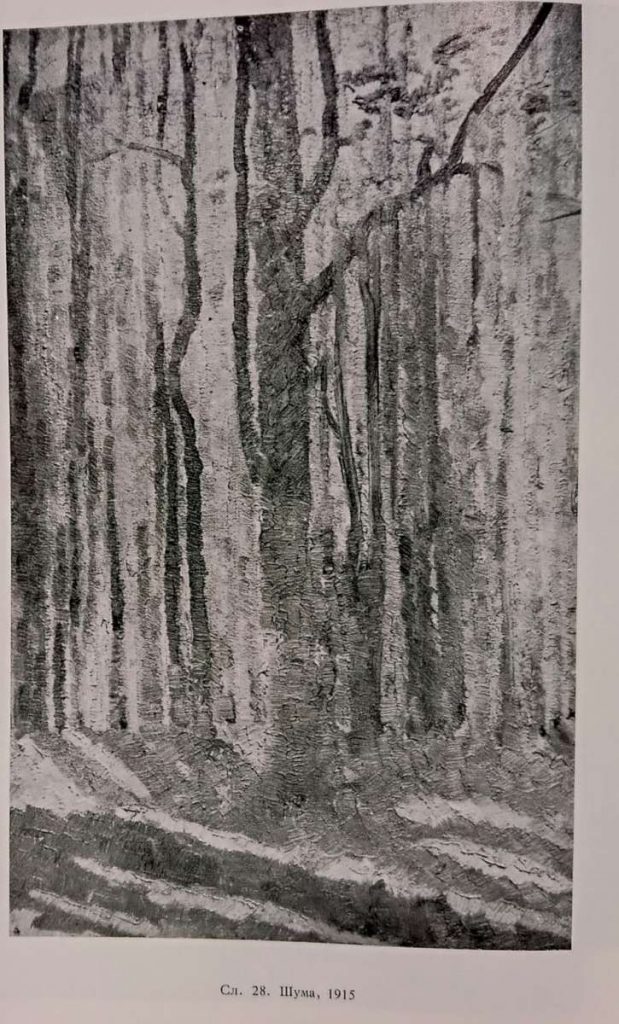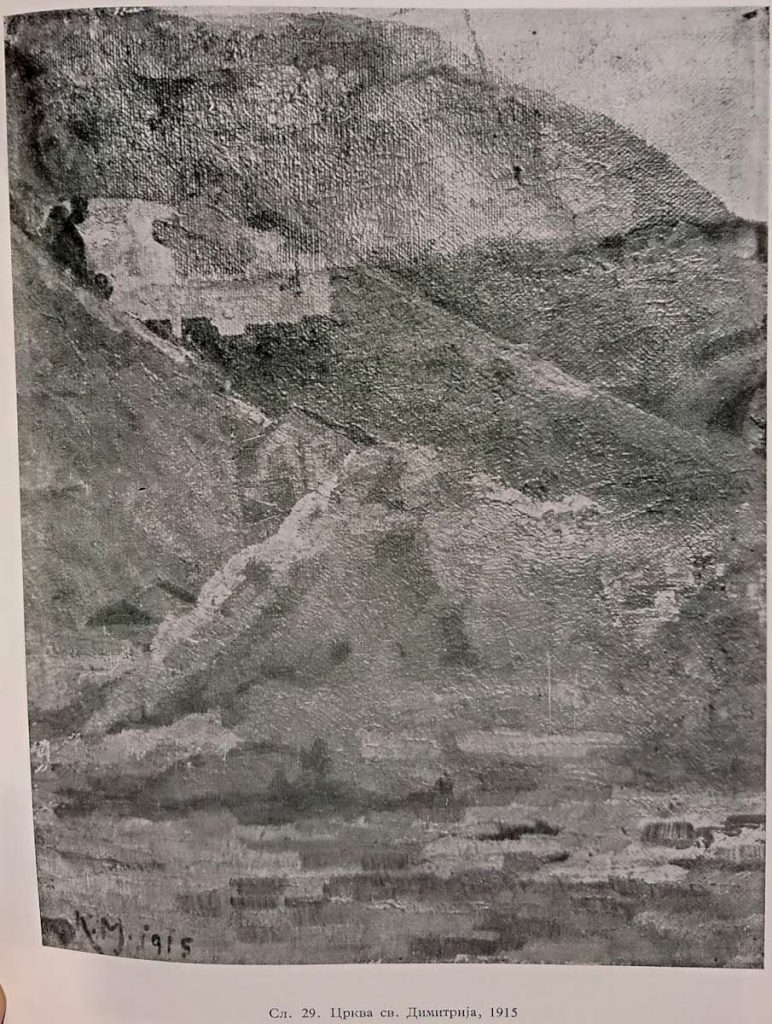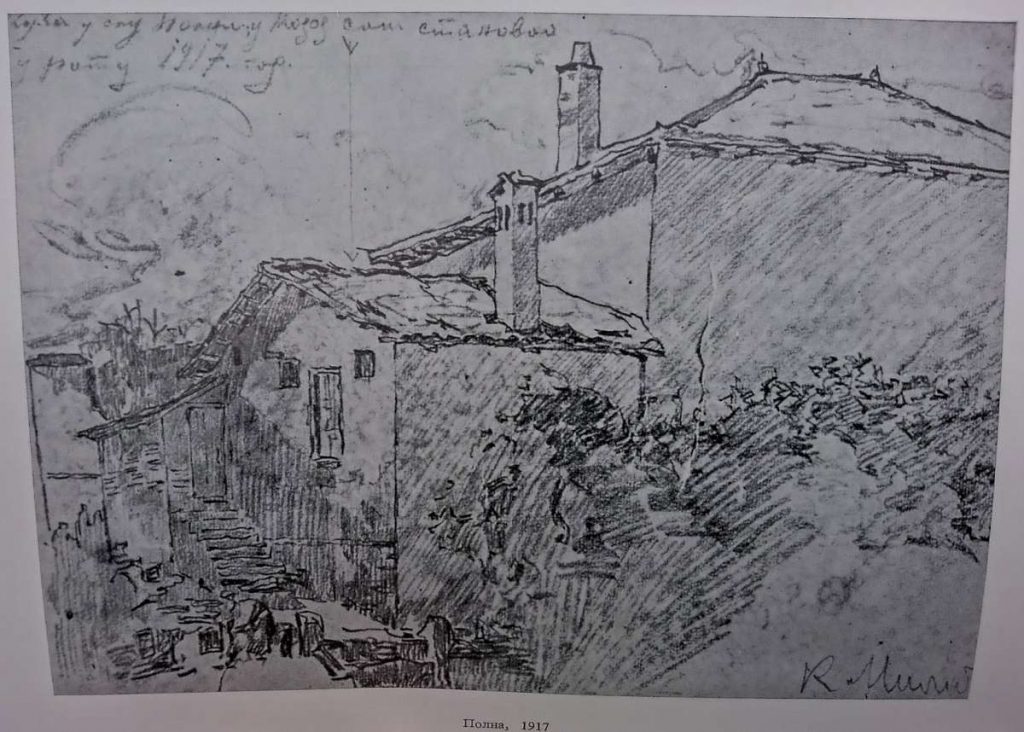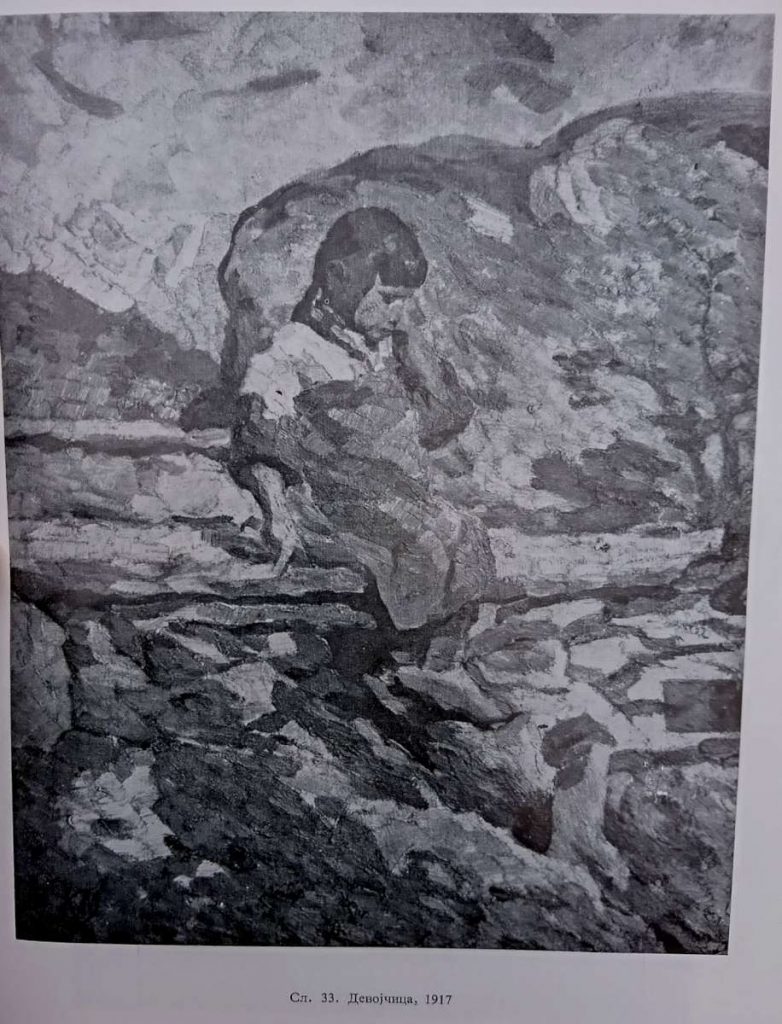Kosta Miličević (Cyrillic: Коста Миличевић; 3 June 1877, Vrakë, near Shkodër – 12 February 1920, Belgrade) was a Serbian Impressionist painter, known mostly for landscapes.
He was born to a clerical family, with a history of service in the priesthood. As a young man, he went to Belgrade, where he studied with Cyril Kutlík , who operated a famous painting school. He continued his training, under difficult financial conditions, in Prague, Vienna, where he worked with the portrait painter, Heinrich Streblow (1862-1925) and Munich. Until 1910, he was an informal student at the arts and crafts school of Riste and Bete Vukanovic. That same year, he became a member of Lada, an art association.
In his early period, he painted in the Academic style, as taught in Germany, then was attracted to Art Nouveau. After becoming acquainted with the works of Nadežda Petrović and Milan Milovanović, he sought to create a more personal style. He finally settled on a free, Impressionistic approach, brought to fruition during a stay at an artists’ colony in Savinac (now part of Belgrade). His first success came at the Fourth Yugoslav Art Exhibition of 1912.
He was inducted into the army during World War I, briefly served as a soldier, then became an official War Painter for the Supreme Command in Corfu. Only five paintings are known to have survived from this period.
After the war, he taught evening classes at the Vukanovic’s arts and crafts school His early death was probably due to Spanish flu.
Kosta Miličević stayed in Veles Macedonia from May 1915 until October 1915. He was a soldier in 1 squad, 2nd battalion, XII regiment. In Veles he enjoyed the company with many Serbian painters, writers and poets who were also drafted in the Serbian army. ( for example, painters: Milan Arsich – Daskal, George Zafirovski from village Papratishta, poet from Sarajevo Milosh Vidakovich, colonel Vojislav Pavlovich conductor of the choir and old friend of Milichevic Stevan Shijacki. Enz..). In Veles he started his best impressionistic phase which he perfected later in Greek island of Corfu in the coming years.
Only 5 paintings survived from his Veles period: 1) ”View on Veles” , 2)”Forest” , 3) Tower of innkeeper Janja”, 4) “tower with church St. Dimitrija 1915” and 5) “Tower with Poplar Trees”. They were found at the end of a chest 50 years later, and are in the private collection of Mrs. Zagorka Andrejevich from Belgrade.
In October 1915, under pressure from Bulgarian army he moved with the Serbian army via Skopje, through Albania toward island of Corfu, where he had his best artistic phase. In 1917 he comes back to Macedonia, in the village of Polna near Thessaloniki, where he painted two paintings “Scene from Macedonia, Polna, 1917” and “Girl 1917”.
Information in this article comes from the book : Kosta Miličević 1877-1920, by , Stanislav Zivkovic, Matica Srpska, Novi Sad 1970; and wikipedia: https://en.wikipedia.org/wiki/Kosta_Mili%C4%8Devi%C4%87
